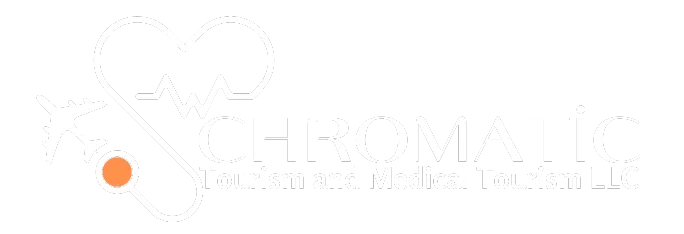At Chromatic Medical Tourism, we specialize in connecting international patients with leading plastic surgeons and JCI-accredited clinics in Istanbul for arm lift surgery (brachioplasty). Whether you’re looking to remove excess skin and fat after significant weight loss or simply want to achieve more toned and sculpted arms, our goal is to provide personalized care to help you feel confident and comfortable in your own skin. With our comprehensive support, your journey to better arm aesthetics will be seamless, safe, and stress-free.
Why Choose Istanbul for Arm Lift Surgery?
-
- World-Class Expertise: Our partner plastic surgeons are leaders in their field, with extensive experience in body contouring procedures like brachioplasty.
- Advanced Techniques: State-of-the-art facilities equipped with the latest surgical tools and technologies.
- Affordable Excellence: High-quality care at a fraction of the cost compared to Western countries.
- Personalized Care: Tailored treatment plans to meet your unique needs and aesthetic goals.
What is an Arm Lift (Brachioplasty)?
An arm lift, or brachioplasty, is a surgical procedure designed to remove excess skin and fat from the upper arms, resulting in a more toned and proportionate appearance. This procedure is ideal for individuals with:
-
- Excess Skin: Often caused by significant weight loss or aging.
- Sagging Arms: Loose skin that doesn’t respond to diet or exercise.
- Stubborn Fat Deposits: Fat that remains despite a healthy lifestyle.
The procedure involves making an incision along the underside of the arm, removing excess skin and fat, and tightening the remaining tissue for a smoother, more contoured look.
Our Comprehensive Arm Lift Services
At Chromatic Medical Tourism, we provide end-to-end support for patients undergoing arm lift surgery in Istanbul. Our services include:
- Pre-Treatment Support
-
- Consultations: Connect with leading plastic surgeons for personalized treatment plans.
- Health Assessments: Comprehensive evaluations to ensure you’re a good candidate for surgery.
- Travel Arrangements: Visa assistance, flight bookings, and comfortable transportation.
-
- During Your Stay
-
- Luxury Accommodation: Stay in comfortable, conveniently located hotels or recovery centers.
- Multilingual Support: 24/7 assistance from patient coordinators who speak your language.
- Clinic Coordination: We handle all logistics, so you can focus on your procedure.
-
- Post-Treatment Care
-
- Recovery Support: Guidance on post-operative care, including compression garments and follow-up appointments.
- Scar Management: Tips for minimizing scarring and promoting healing.
- Ongoing Communication: We stay in touch to ensure your satisfaction and long-term results.
-
- Tourism Services
-
- Explore Istanbul’s rich culture and landmarks during your recovery, with guided tours tailored to your needs. You can check our tourism itinerary packages here.
-
Why Choose Chromatic Medical Tourism for Arm Lift Surgery?
- Expertise and Trust
-
- We partner with JCI-accredited clinics and renowned plastic surgeons to ensure the highest standard of care.
- Our team has years of experience facilitating medical tourism for international patients.
-
- Transparent Pricing
-
- No hidden costs or surprises – we provide clear, upfront pricing for all services.
-
- Personalized Care
-
- From pre-travel arrangements to post-operative follow-up, we tailor our services to meet your unique needs.
-
- Seamless Experience
-
- We handle every detail, so you can focus on your transformation.
-
Frequently Asked Questions (FAQs)
- Who is a good candidate for an arm lift?
-
- Ideal candidates are in good overall health, have stable weight, and are bothered by excess skin or fat in the upper arms.
- Is arm lift surgery painful?
-
- Discomfort is common after surgery, but it can be managed with prescribed pain medication. Most patients describe the pain as mild to moderate.
- How long is the recovery period?
-
- Most patients can return to light activities within 1-2 weeks, but full recovery may take 4-6 weeks. Strenuous activities should be avoided for at least 6 weeks.
- Will there be visible scars?
-
- Scars are an inevitable part of the procedure, but they are strategically placed along the underside of the arm to minimize visibility. Over time, scars typically fade and become less noticeable.
- Can I combine my treatment with tourism in Istanbul?
-
- Absolutely! Istanbul offers a rich cultural experience, and we can arrange guided tours and leisure activities during your recovery. You can check our tourism itinerary packages here.
- How do I get started?
-
- Contact us today to schedule a consultation. Our team will guide you through every step, from medical evaluations to travel arrangements.
Take the first step toward achieving toned, confident arms. Contact Chromatic Medical Tourism to learn more about arm lift surgery in Istanbul or to schedule a consultation. Our team is here to answer your questions and provide the support you need for a successful transformation.
Let us help you achieve the sculpted arms you’ve always wanted with world-class plastic surgery in Istanbul.


